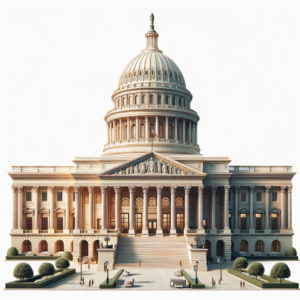Unveiling the Shocking Impact of New State Regulations on Daily Life
In recent months, a series of new state regulations have been introduced, sparking widespread debate and concern among residents, businesses, and advocacy groups. These regulations, aimed at addressing various social, economic, and environmental issues, have far-reaching implications for daily life. As citizens grapple with the changes, it is essential to understand the key aspects of these regulations and their potential impact on communities across the state.
Understanding the New State Regulations: An Overview of Key Changes and Implications
The new state regulations encompass a broad range of areas, including labor laws, environmental protections, and public health mandates. Key changes include increased minimum wage requirements, stricter emissions standards for industries, and enhanced consumer protection laws. These regulations are designed to promote equity, sustainability, and public welfare, but they also introduce complexities that require adaptation from individuals and organizations alike. The implications of these changes are significant, as they not only affect compliance costs for businesses but also alter the landscape of social services and community engagement.
Economic Consequences: How New Regulations Affect Local Businesses and Employment Rates
Local businesses are feeling the immediate economic impact of the new regulations, particularly those related to labor and environmental standards. Small and medium-sized enterprises, which often operate on thin margins, are facing increased operational costs due to higher wage requirements and the need for compliance with environmental regulations. As a result, some businesses are forced to reduce their workforce or pass costs onto consumers, leading to potential job losses and increased prices. Conversely, these regulations may also stimulate job creation in sectors focused on sustainability and compliance, suggesting a complex interplay between regulation and employment that will require ongoing analysis.
Social Impact: Examining Changes in Community Dynamics and Public Services Accessibility
The introduction of new regulations has also influenced community dynamics, particularly in terms of public services accessibility. For instance, enhanced consumer protection laws aim to empower residents by ensuring fair treatment in transactions, but the implementation of these laws may strain existing public service resources. Communities may experience shifts in engagement as residents become more aware of their rights and the services available to them. However, disparities in access to information and resources can exacerbate existing inequalities, leading to a need for targeted outreach and education efforts to ensure all community members can benefit from the changes.
Environmental Considerations: The Role of New Regulations in Promoting Sustainable Practices
One of the most significant aspects of the new state regulations is their focus on environmental sustainability. Stricter emissions standards and incentives for renewable energy adoption are intended to mitigate climate change and promote responsible resource management. These regulations encourage businesses and individuals to adopt greener practices, fostering a culture of sustainability within the state. However, the transition to more sustainable practices may pose challenges for industries reliant on traditional methods, necessitating support and guidance to facilitate this shift without compromising economic stability.
Public Response: Analyzing Citizen Reactions and Advocacy Efforts Against the Regulations
Public reaction to the new regulations has been mixed, with some citizens expressing strong support for the measures while others voice concerns about their feasibility and impact. Advocacy groups have emerged on both sides of the debate, with some pushing for stricter enforcement of the regulations to ensure accountability, while others argue for a reevaluation of certain provisions that may disproportionately affect low-income communities and small businesses. Town hall meetings, social media campaigns, and petitions have become common platforms for citizens to express their views, highlighting the importance of public discourse in shaping the future of these regulations.
Future Outlook: Predicting Long-Term Effects of State Regulations on Daily Life and Governance
Looking ahead, the long-term effects of the new state regulations on daily life and governance remain uncertain. While the immediate impacts may be disruptive, there is potential for these regulations to foster a more equitable and sustainable society in the future. Policymakers will need to monitor the outcomes closely and be prepared to make adjustments based on feedback from constituents and the evolving economic landscape. The success of these regulations will ultimately depend on the ability of the state to balance the needs of businesses, the environment, and the community, ensuring that the benefits are widely shared and that the regulations achieve their intended goals.
As the state navigates the complexities of implementing these new regulations, it is crucial for all stakeholders—citizens, businesses, and government officials—to engage in constructive dialogue. Understanding the implications of these changes is essential for fostering a resilient community that can adapt to new challenges while striving for a more equitable and sustainable future. The coming months will be pivotal in determining how these regulations shape daily life and the overall governance of the state.



























































